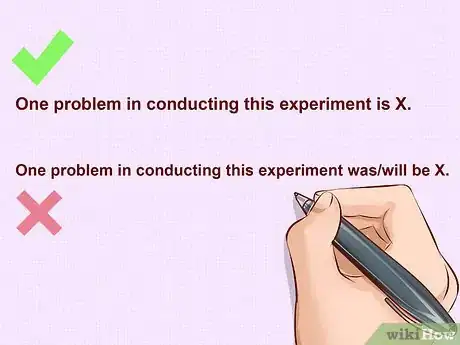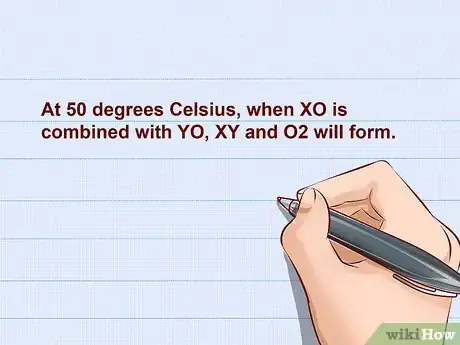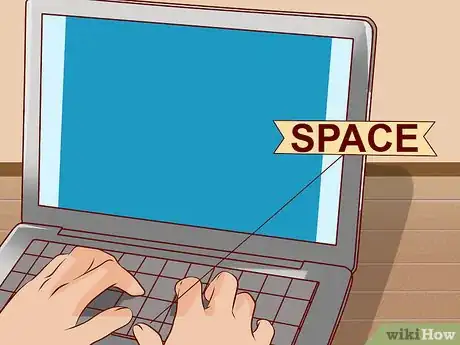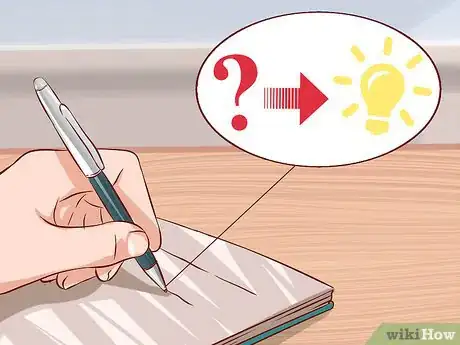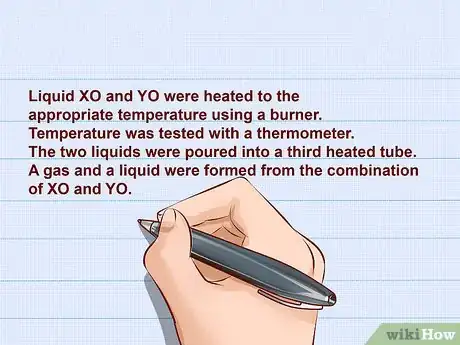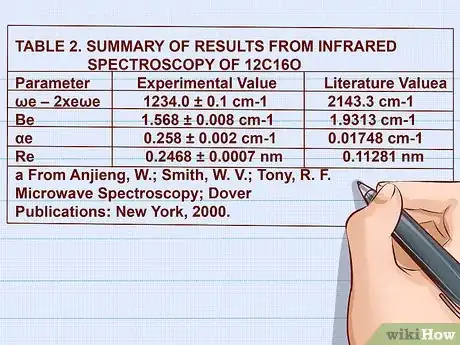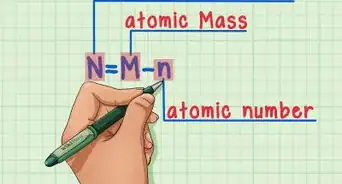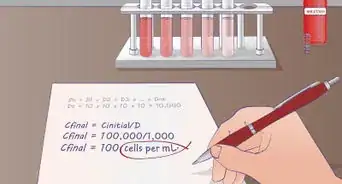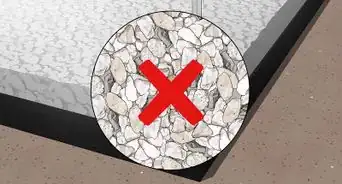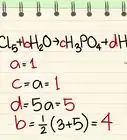This article was co-authored by Meredith Juncker, PhD. Meredith Juncker is a PhD candidate in Biochemistry and Molecular Biology at Louisiana State University Health Sciences Center. Her studies are focused on proteins and neurodegenerative diseases.
There are 8 references cited in this article, which can be found at the bottom of the page.
This article has been viewed 105,787 times.
Lab reports are an essential part of scientific study and knowledge. For any chemistry lab report, you will need to write down or type the entire procedure and everything observed during the lab activity. Any lab report should allow the person reading it to be able to reproduce the exact procedure (and result, hopefully) carried out in the lab. Keep in mind that each course might have slightly different requirements for the details of the report as well as whether it should be handwritten or typed -- this article gives you an overview of typical components.
Steps
Getting Ready
-
1Familiarize yourself with the lab manual. This is the outline and instructions given to you by your teacher or professor. Make sure you understand exactly what you are doing and why. If you have questions, make sure you bring them up with the instructor before class.[1]
- Pay careful attention to the safety precautions recommended for the type of experiment you're doing. You will need to incorporate these into your lab report.
-
2Know the format. Laboratory reports have a particular written style. Unlike creative essays or papers for humanities classes, a report for chemistry is not supposed to have your own personal stamp on it. The essential writing elements are:[2]
- Write in complete sentences.
- Use passive voice -- “Water was poured” rather than “I poured water.”
- Stay in the third person -- “Scientists claim X” rather than “I discovered scientists claim X.”
- Be careful of verb tenses. Most of your report should use present tense verbs, unless you are explaining what you did in the experiment, or what has been written in the past about it. For example, “One problem in conducting this experiment is X” rather than “One problem in conducting this experiment was/will be X.”
Advertisement -
3Hypothesize. What do you think this experiment will do? What will you learn? Hypothesizing, or making an informed guess about what the result of the experiment will be, is one of the key elements in any scientific experiment. Keep in mind that it’s only an idea about what might happen, and you often come up with a different result.[3]
- ”At 50 degrees Celsius, when XO is combined with YO, XY and O2 will form.”
-
4Be familiar with your instructor’s expectations. Though there are elements that will appear in all lab reports, each instructor might have different expectations. Be certain that you know, for example, how your teacher or professor wants citations and/or endnotes, whether he or she will require a list of materials, and exactly how a final lab report should be formatted.[4]
Writing Down Basics
-
1Start with your title, personal, and class information. Make sure you follow your instructor's preferred order. If he or she didn't express a preference, begin with the title of the experiment you are going to conduct. Any lab report will need to include your name and the name of your lab partner(s) and their email addresses. Also provide the date that you did the experiment, the name of the teacher or professor, and the class name, number, and section number (if applicable).
- Experiment 7: Identification of the Results of X + Y
- Eloise Texeira (etexeira@wonderful.net)
- Partner: Jose Marques (jmarques@wonderful.net)
- CHEM 215-08
- July 14, 2015
- Professor Lewis
-
2Leave space at the beginning for your abstract. This will be the part where you sum up your work. You will tell the reader what you did and why, and then the results. Since it’s at the beginning, however, you will need to wait to write it until the end.[5]
-
3Write an Introduction. This will give your reader the basics of the experiment you will be conducting.[6] Start by providing the background on your topic, as well as what previous research has shown. Next, explain the gap in research that you will be testing. State your hypothesis, as well as how you will test it. Your introduction will answer the following questions:
- What do we know beforehand (previous knowledge or research around the experiment)?
- Why did you choose to do this experiment?
- What was the purpose of the experiment?
- What do you believe you will discover?
- Why do you believe that your experiment will turn out in a particular way?
Getting to Specifics
-
1Include the Reaction Equation. You can typically find this in the lab manual for the class. It is the chemical reaction that you are going to be conducting, laid out with the reactants and products labeled and their structure. You will also need to indicate the temperature of the experiment and the solvent.
- Your equation should be correctly balanced, with your stoichiometric coefficients reduced.
- For example, at 50 degrees Celsius, XO(l) + YO(l) -> XY(l) +O2(g).
-
2Conduct the Experimental Section. This is the part where you will conduct the experiment and write down every step. Do not just copy the lab manual -- tell the reader what happened in your particular experiment. Document everything as you are going through the process.[7]
- Keep in mind that other scientists will use this section of your paper to reproduce your results, so be as specific as possible.
- Here's an example: "Using a burner, we heated Liquid XO and YO to 50 degrees Celsius. We verified the temperature with a thermometer. We poured the liquids into a third tube, which we'd heated to 50 degrees Celsius. The combination of the 2 liquids formed an O2 gas and Liquid XY inside the tube.”
-
3Record your results. At the end of the Experimental Section, you need to let the reader know exactly what emerged from your experiment. Be sure to use the proper format. Record every single thing that happened, even if it seems insignificant or silly. The appropriate order is:[8]
- Name and amount (in grams) of the final product
- Melting point of the final product with the known literature value
- Gas Chromatography Mass Spectroscopy (GCMS) data
- H NMR data
- Infrared Spectroscopy (IR) data
-
4Write a Results and Discussion Section. This is where you analyze your results and whether your experiment went as expected. If not, why not? How did the experiment match (or not) your hypothesis? Were there problems in doing the experiment that might have affected the results?[9]
- As part of this section, write a paragraph about how your results could be used in the future, or the future direction research could go based on your findings.
Finishing Up
-
1Write a Conclusion. In a short and concise section, sum up what you learned from the experiment and whether it went as you thought. Unlike the Results and Discussion Section, the Conclusion is more focused on the broad ideas brought up in your introduction than the specifics of your particular experiment.[10]
-
2Cite your sources. Be sure to include the lab manual. Using the citation style chosen by your instructor, write down all of the books or websites that you used to prepare and learn about the experiment. This would also typically include your textbook.[11]
- This includes any relevant papers you read before conducting your experiment, even if you didn't directly cite them in your report.
-
3Create an abstract. The abstract (no more than 200 words) should give the reader the basics about your experiment and its results. It should be self-contained, meaning that a person should be able to read the abstract and get a summary of your entire work without having to read any other section. Even though you’re writing the abstract at the end, it will end up going at the beginning of the report.[12]
Expert Q&A
Did you know you can get expert answers for this article?
Unlock expert answers by supporting wikiHow
-
QuestionCan I write with pen on white paper for a chemistry lab report?
 Meredith Juncker, PhDMeredith Juncker is a PhD candidate in Biochemistry and Molecular Biology at Louisiana State University Health Sciences Center. Her studies are focused on proteins and neurodegenerative diseases.
Meredith Juncker, PhDMeredith Juncker is a PhD candidate in Biochemistry and Molecular Biology at Louisiana State University Health Sciences Center. Her studies are focused on proteins and neurodegenerative diseases.
Scientific Researcher This depends on the requirements set by your lab instructor. Some lab instructors will allow you to write with pen on white paper. However, they may prefer that you type up your report or write your report in a spiral notebook. If you make a mistake when writing in pen, only draw 1 line through the mistake, then continue writing.
This depends on the requirements set by your lab instructor. Some lab instructors will allow you to write with pen on white paper. However, they may prefer that you type up your report or write your report in a spiral notebook. If you make a mistake when writing in pen, only draw 1 line through the mistake, then continue writing. -
QuestionHow do I put my chemistry lab report in order?
 Meredith Juncker, PhDMeredith Juncker is a PhD candidate in Biochemistry and Molecular Biology at Louisiana State University Health Sciences Center. Her studies are focused on proteins and neurodegenerative diseases.
Meredith Juncker, PhDMeredith Juncker is a PhD candidate in Biochemistry and Molecular Biology at Louisiana State University Health Sciences Center. Her studies are focused on proteins and neurodegenerative diseases.
Scientific Researcher Here is a good order for your lab report: 1) Abstract - You'll write this summary of the experiment last, but put it first in your report. 2) Introduction - Include the background information, and point out the gap in research you're addressing. 3) Hypothesis - What you think will happen when you test the gap in knowledge. 4) Experimental Section/Materials and Methods - Describe your reagents, protocols, and every detail of what you did. 5) Results - Explain what happened, providing your data. 6) Discussion - Provide your data interpretations, note any issues or mistakes, and suggest future directions. 7) References - Include all of your sources!
Here is a good order for your lab report: 1) Abstract - You'll write this summary of the experiment last, but put it first in your report. 2) Introduction - Include the background information, and point out the gap in research you're addressing. 3) Hypothesis - What you think will happen when you test the gap in knowledge. 4) Experimental Section/Materials and Methods - Describe your reagents, protocols, and every detail of what you did. 5) Results - Explain what happened, providing your data. 6) Discussion - Provide your data interpretations, note any issues or mistakes, and suggest future directions. 7) References - Include all of your sources! -
QuestionWhat exactly do I include in a conclusion?
 Community AnswerIn a conclusion, include the following: Whether the hypothesis was supported or refuted, why, and an error analysis. Explain what the results mean, and incorporate research from other sources if relevant.
Community AnswerIn a conclusion, include the following: Whether the hypothesis was supported or refuted, why, and an error analysis. Explain what the results mean, and incorporate research from other sources if relevant.
References
- ↑ https://advice.writing.utoronto.ca/types-of-writing/lab-report/
- ↑ http://guides.lib.purdue.edu/c.php?g=352816&p=2377936
- ↑ http://www.livescience.com/21490-what-is-a-scientific-hypothesis-definition-of-hypothesis.html
- ↑ https://advice.writing.utoronto.ca/types-of-writing/lab-report/
- ↑ https://guides.libraries.indiana.edu/c.php?g=992698&p=7182653
- ↑ https://guides.libraries.indiana.edu/c.php?g=992698&p=7182653
- ↑ https://d.web.umkc.edu/drewa/chem321l/Handouts/321L%20Experimental%20Section%20for%20Lab%20WriteUPs.pdf
- ↑ http://writing2.richmond.edu/writing/wweb/chemistry/format.html
- ↑ https://advice.writing.utoronto.ca/types-of-writing/lab-report/
About This Article
To write a chemistry lab report, start by describing your experiment and your hypothesis, or what you think will happen. Include the Reaction Equation, which you is the chemical reaction that you are going to be conducting, including the reactants and products and their structure. As you’re writing the lab report, write in the third person, passive voice, and use present tense unless you are explaining what you did in the experiment or what has already been written about it. For tips on writing your introduction and conclusion, read on!

